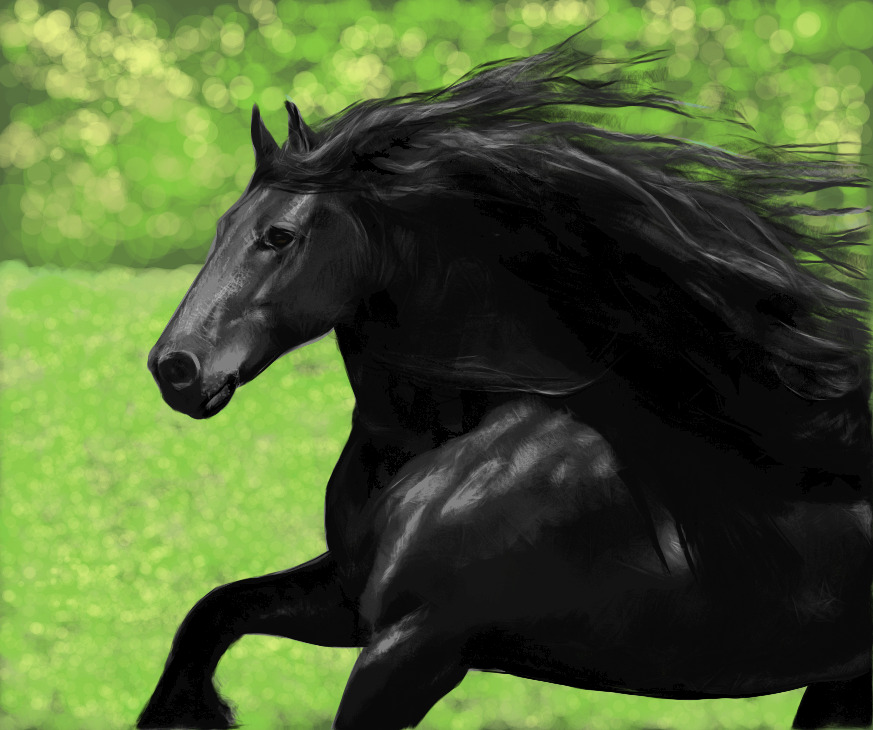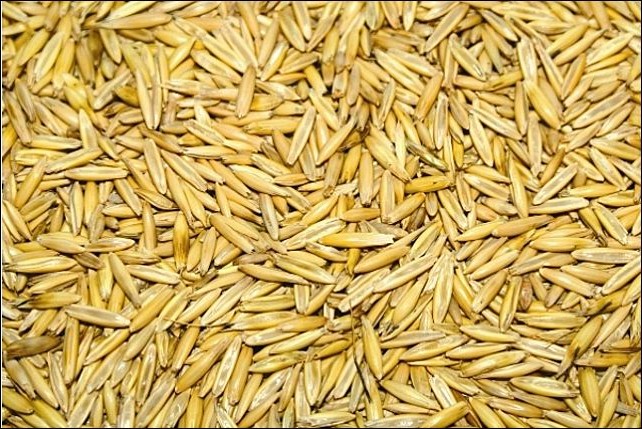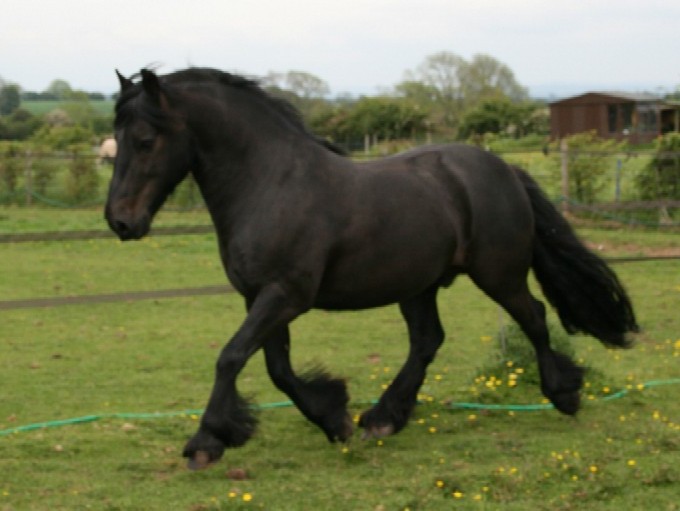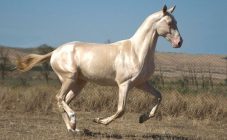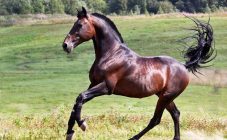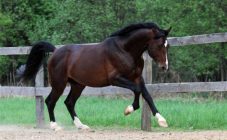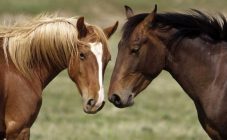Content:
The existence of black horses has been known since ancient times. They are shrouded in many legends and myths. Despite the fact that some peoples considered this breed unlucky, these equids have always been in value. Currently, it is still a rather rare species, which is distinguished by a black color with blue tints, dark skin and brown eyes.
Factors that affect the color intensity of a black horse:
- Molting. After that, the color becomes much richer.
- Diet. With poor nutrition, the color fades slightly.
- Season. With regular exposure to sunlight, the wool burns out.
- A haircut. The root part of the mane becomes slightly lighter after trimming.
Origin story
In the first documentary historical information about black horses, the Friesian breed appears, which they began to grow and breed back in the 13th century. in Holland. Until this time, only the mighty black horses were mentioned, which were used for field work.
Since ancient times, many legends and folk tales have been composed about black horses. Some of them were terrifying.
- Europeans in the Middle Ages associated black horses with evil spirits, considered them to be from purgatory, and treated them with fear.
- The Slavs respected, but also feared representatives of the black suit. The heroes were depicted riding on these strong and hardy animals.
- In the East, the black horse was a symbol of protection from evil. Only deeply respected people received such a beast as a gift.
- In African countries, the black horse is a symbol of perfect beauty.
Genetics
The black horse belongs to the basic suit. According to some data, besides her, only red horses were awarded this title, according to others, gray and bay horses are also ranked among the basic color types, in addition to black and red. The black color is less common than the others.
What color is a black horse? The animal receives its bluish-black shade of wool thanks to the Extention gene.
Breeding color
The probability of giving birth to a black foal in two black individuals with the Extention gene is 70%. In 30% of cases, the result of such a cross can be a bay horse.
After mating black and bay animals, the result will often be a bay, less often a black foal.
A rather low probability of the birth of an individual with a black suit from two representatives of the bay breed.
Appearance
At birth, a black mare cub does not have a pronounced black color. Often its coat is gray, dark gray, or even chestnut. Only when growing up after molting do the black pigments of melanin appear brightly.
An adult representative has an impressive physique and an aristocratic appearance.Strong and healthy individuals, which are kept in good conditions, are distinguished by a uniform, ideally black coat color with characteristic highlights.
Character and disposition
In the 16th century. it was believed that the color of the horse directly affects its character. Hippologist Johann Christopher Pinter von der Au argued that the black horse is melancholy. Leneiss was of the opinion that the dark color is a sign of clumsy animals.
Currently, scientists have not identified the dependence of temperament and character on the suit. The behavior of an individual depends on the influence of external factors, education, treatment. This animal, like relatives of other stripes, can show anger or be affectionate and docile. These representatives of equids, whether it be a heavy draft or a black trotter, are often energetic, but restrained, quickly become attached to the owner, monogamous.
The diet
The feed unit is a special measure calculated on the basis of the physical activity to which the black horse is subjected, its physical health and weight. For different individuals (foals, mares, stallions), this parameter will differ. But the diet must be rich in hay, oats, bran, vegetables, fruits, in addition to the daily norm of kitchen salt and vitamins.
Water should be drunk regularly, it has a beneficial effect on the digestive processes. Before eating, the animal should be watered so that the food is better absorbed. In the cold season, the volume of water is increased, since the diet consists mainly of dry food.
Blackjack horses and breeds
Black color with a blue tint is inherent in all breeds, both working and racing (with the exception of the Gaflin and Sufolk species). But most of all, the following breeds are predisposed to black suit:
- fell;
- shire;
- Spanish;
- American Percheron;
- Ostfrisian;
- French ariegeoise;
- Kabardian;
- cladrubskaya.
In addition to the classic bluish-black color, the black suit has 6 shades (varieties of shades and colors). What is the color of the black horse:
- Ash-black in bright natural light instead of blue has a slight ash (grayish) tint. At different levels of illumination, you can observe a blue, brown, light or dark brown reflection.
- The silver-black color of the horse is distinguished by a unique color: the body is deep black, and the mane and tail are beige and white. This is a very rare and most unusual color.
- The black-piebald stallion is distinguished by white spots on the black coat.
- The crow-roan oozing looks like an even gray or ash color. Upon closer inspection, it is noticeable that black hairs alternate with white, which gives the effect of gray color.
- Karak sweep is quite rare. Distinctive features - brown hair around the eyes, mouth and groin.
- A black-tanned stallion has a genetically black coat, but as a result of constant exposure to direct sunlight, the color fades and the coat acquires a partial or completely bay brown color.
Finding a really black horse is difficult now. And it does not cost 100 rubles, but several hundred, or even millions of dollars. However, an expensive purchase will pay off many times if you participate with him at exhibitions or sports competitions. For these purposes, you need to carefully choose the breed, which are described above.

